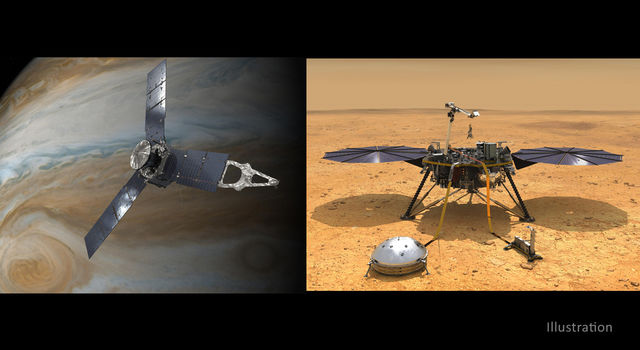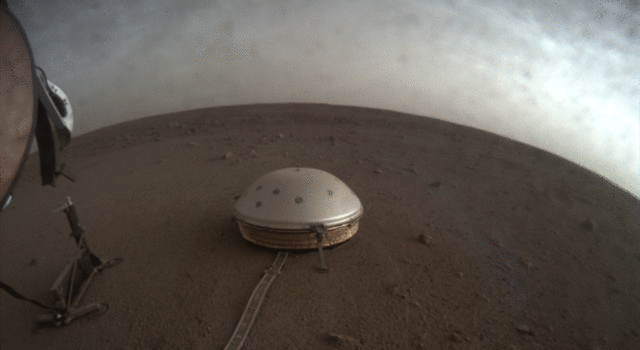Blogs | Dawn Journal | November 13, 2007
November 2007
Dear Dawnocentrics,
Now more than halfway through its 80-day initial checkout phase, the Dawn spacecraft continues to please its fans in mission control and throughout much of the rest of the universe. The project team has maintained the intensive pace described in the last log, and the sole team member in deep space has performed extremely well.
Dawn excelled in what may be the most important test of this part of the mission, an essential step in preparing for the rest of its voyage. The probe will spend most of 2008 - 2011 patiently using its ion propulsion system to change its orbit around the Sun to match Vesta's solar orbit. After more than half a year orbiting the enormous asteroid, the explorer will devote the majority of the subsequent 3 years to ion-propelled travel to dwarf planet Ceres. While its interplanetary journey will include many other activities, gentle thrusting will be the most common. (The most interesting of these activities will be covered in future logs, so to advertise your product in one of those logs, contact our representative on your planet now!)
Dawn must be able to sustain thrusting week after week, month after month, year after year, with only occasional interruptions, ranging from a few hours to a few months at a time. In a typical week of its interplanetary flight, Dawn will thrust for about 6 days 16 hours. (The exact duration will vary from that by as much as about a day. It will depend upon a number of details, including the schedule for Dawn’s use of the Deep Space Network, NASA’s amazing system for communicating with spacecraft throughout the solar system.) It will stop thrusting long enough to rotate so that its main antenna points to distant Earth, to transmit engineering information stored since the previous communications session (to allow engineers to assess its health and performance), to receive any new commands, and to rotate back to point the ion thruster in the required direction. Then it will settle in for nearly another week of thrusting.
While the craft was designed to be able to accomplish just such a routine, one of the principal objectives of the 80-day initial checkout is to verify its readiness. On November 2, mission controllers radioed all the instructions Dawn would need for a typical week of interplanetary operations. On November 5, right on schedule at 4:00 pm PST, Dawn began following the steps to start ion thruster #3. It turned to point that unit in the direction engineers had specified, and, with all systems configured, began thrusting at 5:07 pm. Throughout the subsequent week, as it emitted a high velocity beam of xenon ions, it recorded information on the operation of its systems and executed other programmed maintenance activities. Following the plan perfectly, it stopped thrusting on November 12 at 1:53 pm PST.
In the interest of full disclosure, 4 additional points should be made: 1) During most of the time in the mission that Dawn will thrust, Earth will not have contact with it, but this test included frequent contact. Dawn transmitted information on its health, so if a problem developed, it could be diagnosed promptly. Still, the craft was instructed to store all the relevant data for transmission during one 6-hour period (on November 12), just as it will have to for most of the mission, so engineers could verify that all the data buffer sizes and recording rates were adequate. This also shows the operators what their view of spacecraft telemetry will be when contact really is only once each week. 2) There are only 2 points that should be disclosed, not 4. 3) The previous point is not correct.
After terminating ion thrust, Dawn turned to a new orientation and transmitted the information it had been storing since November 5. The mission operations team will not check out the main antenna until later this month, so this test used 1 of the 3 smaller antennas, each of which still provides an adequate signal this early in the mission (as the probe has not receded too far from Earth).
Following a 6-hour communications session, the spacecraft repeated the steps of a week before: it turned to the direction needed for thrusting as it initiated the steps required to start the ion thruster. Another 4 hours of thrusting was adequate to demonstrate that it could execute the repetitive pattern.
This test was not designed to verify the performance of any one subsystem; rather, it was intended to show that all subsystems could work together as one integrated system. All engineering subsystems onboard played a role: command and data handling, electrical power, attitude control, reaction control, ion propulsion, thermal control, and telecommunications. Overviews of these subsystems were presented in the September 17, 2006 log. (Upon reviewing that material, and in preparing for the midterm exam, it may be worth keeping in mind that any system may be viewed as a subsystem at the next level up. So the use of “subsystem” or “system” is often a matter of context or personal preference.)
More than spacecraft subsystems were involved in this test. The full set of commands required to guide Dawn through a week would be too time consuming for the small mission control team at JPL to formulate and check without a broad suite of sophisticated software tools. Those tools -- another set of subsystems -- and the procedures for using them, also were part of this test.
While this test was an important success, much work remains in the 80-day checkout phase. Were it not for the need to characterize and test Dawn’s systems, thrusting would not be helpful during this part of the mission, as described on September 12. (That’s only 2 days after the wheel was invented on a planet in NGC 2099, a star cluster in Auriga. Although they won’t see this until after they have made a little more technological progress, we offer our congratulations now to those innovators, and we look forward to their joining the legions of future readers fascinated by the history of Dawn’s adventure.) The thrusting prior to mid December does not help propel Dawn to its destinations, but it does help prepare for the long periods in the mission in which such thrusting is required.
In addition to the tests described in recent logs, the Dawn team has been conducting many other activities, including testing reaction wheel desaturation during gyroless thrust vector control, changing hydrazine catalyst bed thermal control set points, setting the safe mode battery trickle charge rate in RAM to 175 milliamps, flying Ben’s radio-controlled blimp around Dawn mission control (boys will be boys -- and as engineers, we had fun figuring out how to improve it!), and loading Chebyshev thrust pointing files. While most such activities don’t lend themselves to more complete descriptions, they are part of maintaining steady flight.
Dawn is 13.0 million kilometers (8.1 million miles) from Earth or 34 times farther than the moon. Radio signals, traveling at the universal limit of the speed of light, take 87 seconds to make the round trip.
Dr. Marc D. Rayman
7:00 am PST November 13, 2007
TAGS:DAWN, VESTA, CERES, DWARF PLANET, MISSION, SPACECRAFT







